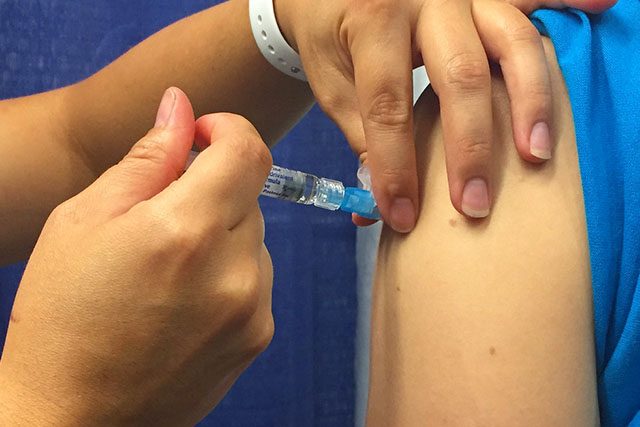
MANILA — The Philippines risks having more cases of polio unless it sharply steps up its vaccinations of children under 5 years of age, the World Health Organization said.
The Southeast Asian country is dealing with an outbreak of the infectious disease. A wider outbreak of polio could set back global efforts to eradicate the crippling disease, which remains endemic in only three countries — Afghanistan, Nigeria and Pakistan.
The confirmed cases in the Philippines were caused by “vaccine-derived” polio rather than the wild type of the virus, which had been eradicated in the country nearly two decades ago.
“The WHO is gravely concerned about the situation in the Philippines,” Rabindra Abeyasinghe, WHO Philippines representative, told reporters.
Immunization coverage in the Philippines for oral polio vaccines is 66%, but needs to be at 95%, Abeyasinghe said. Just 40% of children under 5 have received a polio vaccine by injection.
“If we do the vaccination the way we normally did, and that 30% are not vaccinated, you are seeing another outbreak in another couple of years”, he said.
The Philippines will roll out next month an immunization program that will initially target the children in two areas of the southern region of Mindanao, where the first case of polio was confirmed last week and where the virus has been detected in sewage systems.
A second case was also recorded last week in Laguna, south of the capital Manila, more than 1,000 km away from Mindanao.
Eroding trust in vaccines and poor access to healthcare facilities are among the reasons why Filipino children are not getting vaccinated, compounding the problems of health authorities already battling measles and dengue outbreaks.
The WHO has given the Philippines access to an oral polio vaccine (OPV) against type 2 of the disease, which the country does not have.
OPVs produced from 2016 no longer target the type 2 strain because the wild poliovirus type 2 has already been eradicated worldwide since 2015, but the WHO still keeps a stockpile.
The vaccine-derived type 2 poliovirus was the strain detected in the two reported cases, Abeyasinghe said, adding that the WHO and the United Nations agency for children, UNICEF, would work with the Philippines to vaccinate more children.
Vaccine-derived cases tend to occur in places with low vaccine coverage and poor sanitation as people who have been vaccinated excrete the virus, putting those who have not been vaccinated at risk of catching it.
Polio is a virus that attacks the nervous system and can cause irreversible paralysis within hours of infection. Children under five are the most vulnerable, but polio can be prevented with vaccination.
The last known case of wild poliovirus in the Philippines was in 1993, the WHO said.
— Reporting by Karen Lema; Editing by Jacqueline Wong









